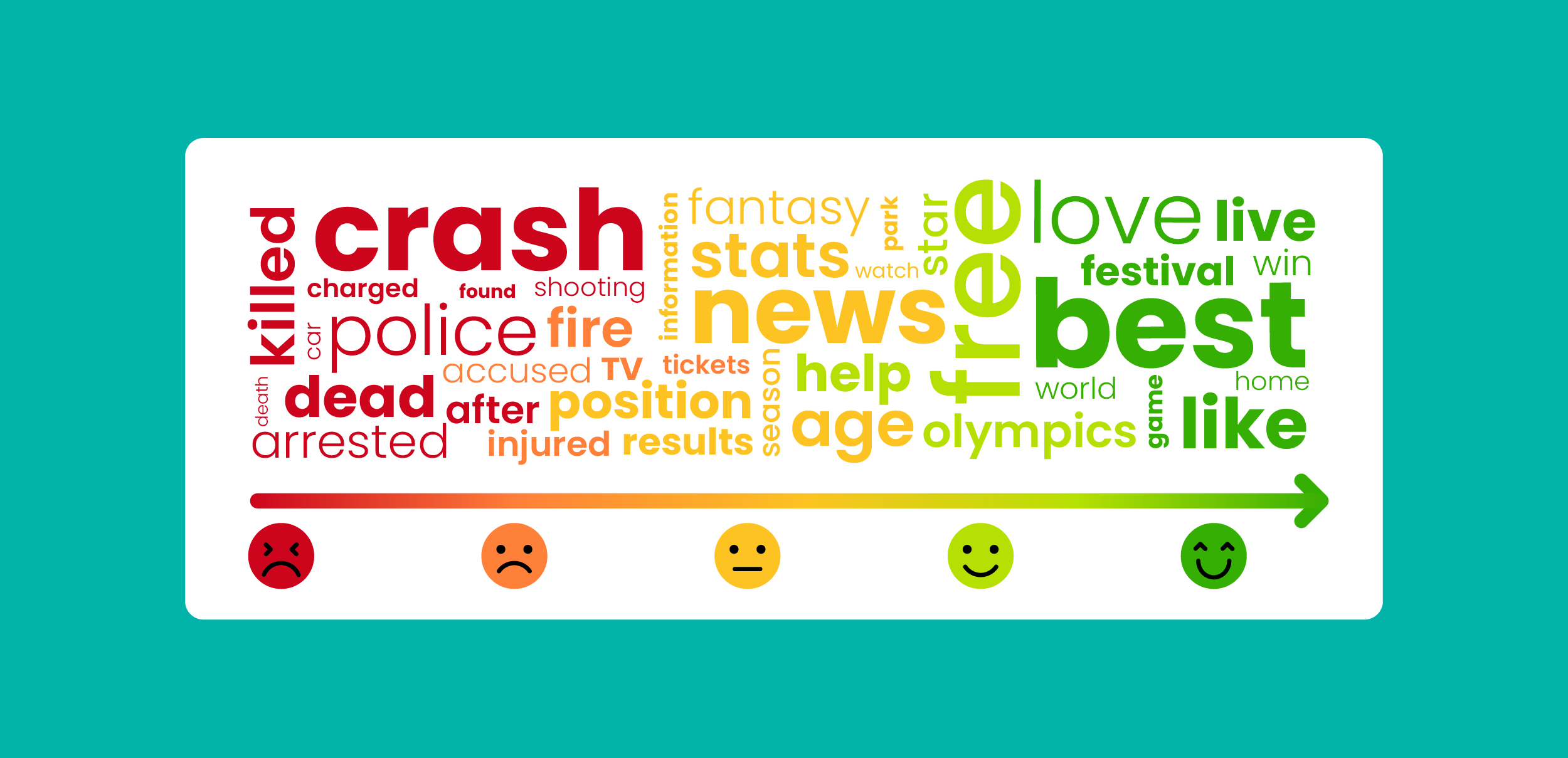Why Bad News Gets Clicks (But Doesn’t Always Pay)
By Asaf Shamly | November 7, 2024

Ever notice how the headlines that shout doom, gloom, and disaster seem to get all the attention? It’s not just you – there’s a reason for it, and it’s called “negativity bias.”
Our brains are wired to focus on anything that might look like a threat.
Way back, this bias kept us alert to dangers, helping us survive.
Today?
It’s what makes us click on those not-so-cheery headlines.
Naturally, this got me curious.
I wondered: Is there a link between negative news, audience engagement, and ad revenue?
In other words, is “bad news” actually good for business?
So, we analyzed over 82 million pageviews to find out what kinds of stories keep people on the page and if advertisers are willing to pay for that attention.
Here’s What We Found
1. People Are Drawn to Bad News:
No surprises here – negative headlines tend to hold people’s attention. Readers linger, scroll slower, and read deeper. It’s like we’re wired to tune into anything that sounds even remotely threatening. Bad news stories keep folks engaged for longer periods, which from an engagement perspective, is gold.
2. The Revenue Reality Check:
But here’s the kicker – while negative headlines may draw people in, they don’t always bring in the ad dollars you might expect.
Advertisers can be a bit wary about associating their brands with negative content, especially for their high-paying placements.
In markets like North America, we noticed this cautious approach loud and clear. It turns out, ad revenue from negative stories doesn’t quite match the engagement they generate. So yes, negative news is good for clicks, but when it comes to CPMs and ad placements? Not always a win.
Different Regions, Different Reactions
We also noticed that not all regions react the same way to content. Take Latin America, for example. Readers there gravitate more toward positive stories. They still engage with a range of content, but upbeat stories are what resonate.
Meanwhile, North American audiences seem more balanced, with a healthy mix of both positive and negative engagement.
Understanding these nuances can help publishers tailor content strategies for specific regions to get the most out of both engagement and ad revenue.
So, What’s the Takeaway?
So, is bad news good for business?
The answer is… complicated.
On one hand, negativity drives clicks, views, and keeps people on the page.
On the other, advertisers are cautious – they tend to invest less in negative content, especially on premium placements.
For publishers, finding a balance might be the key. Neutral or mildly negative content can be that sweet spot where engagement is high, and ad revenue isn’t compromised. The takeaway here? It’s about making data-driven choices that align with what audiences respond to and what advertisers are willing to support.
This is where tools that can adjust ad placements based on real-time engagement data can really help – aka Browsi 🙂
If you’re interested in the full breakdown of our findings, check out the full report. It’s a good one – I promise!
Latest Articles
-

What the RSL Standard Signals About the Future of Visibility in 2026
When Reddit, Yahoo, Medium, and several of the web’s biggest content platforms announced a new Really Simple Licensing (RSL) standard, most coverage focused on the politics: platforms finally demanding compensation from AI companies; a new legal framework for training data; the good old open-web fight. But if you take one step back, something bigger comes into focus. For the first time, publishers are trying to engineer visibility - not for users, but for AI agents. And advertisers should be paying attention.
View Now -

When the Pipes Change, So Do the Rules: What OpenAds and AdCP Signal for Advertisers
Programmatic’s foundations are shifting. As control moves closer to publishers and planning logic becomes more open and inspectable, two developments - OpenAds and AdCP - are redefining how ad decisions are made. Together, they signal a new era where fewer intermediaries, clearer signals, and transparent coordination reshape the rules for advertisers.
View Now -

When AI Becomes the Storefront, Advertisers Need to See Beyond the Chat Window
ChatGPT Shopping quietly introduced a massive shift: AI is becoming the new storefront. Discovery, comparison, and checkout now happen inside a single conversation - no website required. For advertisers, this means visibility depends on how well their message can be interpreted, ranked, and surfaced by AI systems that control attention.
View Now
